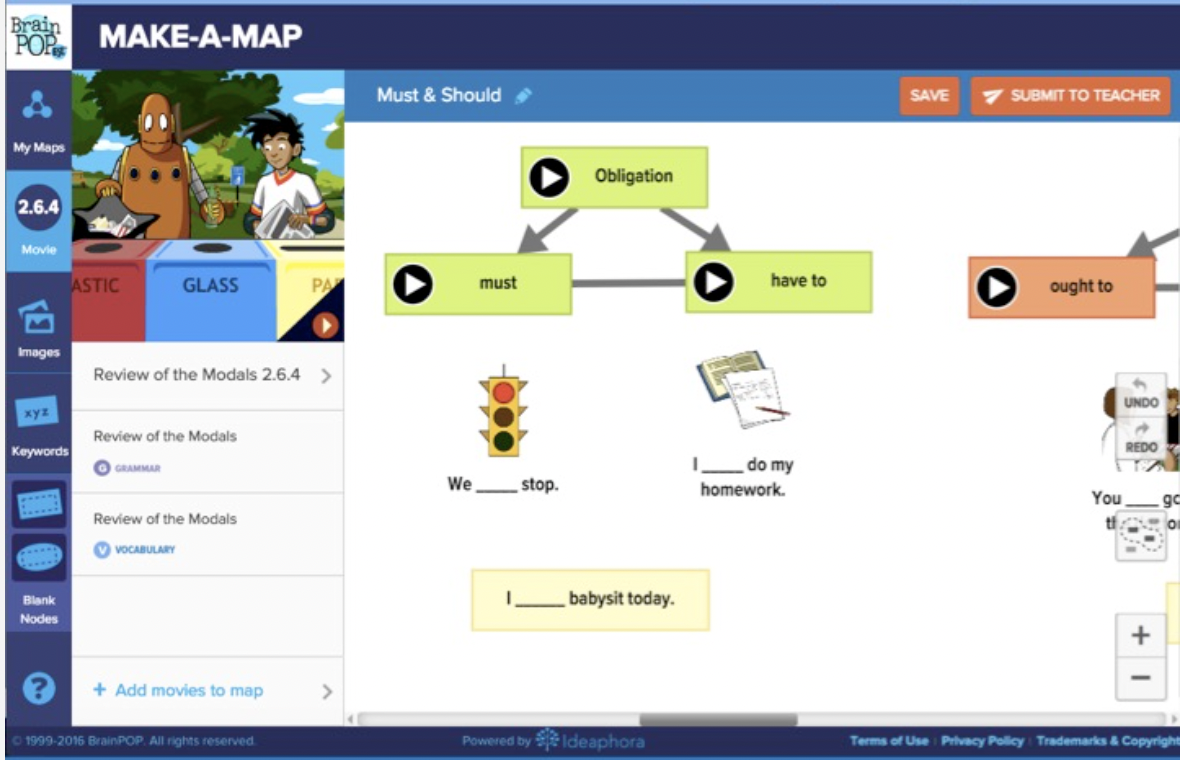Concept Mapping Tips
This article shares best practices for using concept mapping with English language learners.
WHY IS CONCEPT-MAPPING HELPFUL FOR ENGLISH LANGUAGE LEARNERS?
Visual input. The first and most important type of comprehensible input for ELLS is visual. Make-a-Map gives students a space to creatively represent their thinking and reasoning, and to visualize relationships among concepts.
All language domains. Concept mapping encourages students to interact with content using all four language domains (listening, speaking, reading, and writing). Students can write their ideas and read them. They can talk about their maps and listen to their peers. Students can work collaboratively on a concept map, creating opportunities for speaking and listening, or work individually, focusing on reading and writing.
Differentiation. Because concept maps can be simple or complex, they’re an effective learning tool for students of varying skills and language levels. Students of all levels can be successful with Make-a-Map, participating in the same activity about the same content. With Make-a-Map, there are no wrong answers: students come up with their their own meaning and connections.
Make-a-Map can be especially useful for students who are reluctant to participate in class activities. While verbal and written participation may be intimidating, expressing ideas visually and spatially might be approachable and liberating.
Prior knowledge. Engaging students’ prior knowledge helps make content comprehensible, especially for ELs. With Make-a-Map, students draw connections among multiple concepts based on their prior knowledge. The result is a visual representation of their thinking created by them. That is powerful.
TIPS FOR USING CONCEPT MAPS WITH ELLs
- Provide a prompt, such as a focus question or big idea, for students to think about and illustrate in their maps.
- Suggest language students can use to connect their ideas, such as sentence starters and frames. For more support, provide charts with specific language for higher-order thinking skills, such as signal words for comparing and contrasting, sequencing, or cause and effect. This is especially important when asking students to explain their maps in a verbal or written summary.
- Encourage cooperation and communication by having partners share their maps. If they have worked on the same focus question, they can create a new map combining their ideas.
- Support students’ use of native language. Making connections in their native languages helps students gain a deeper understanding of the featured concept.
- Use Make-a-Map for formative assessment. Concept maps can help identify gaps in students’ learning, and in turn, help you tailor instruction to their needs. Concept maps also provide an alternate modality for learners with low language skills to demonstrate what they know.






